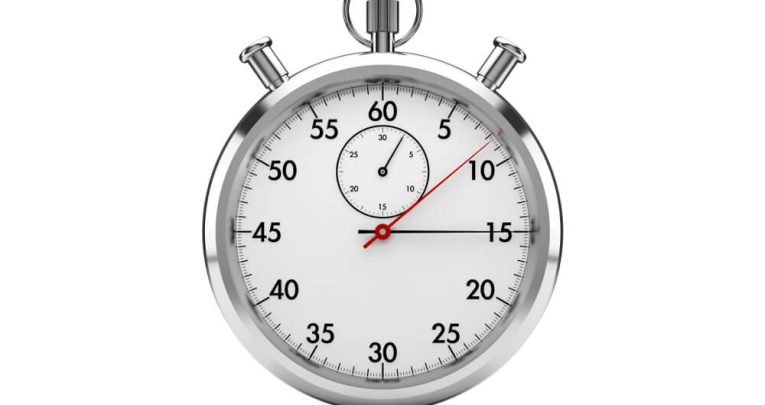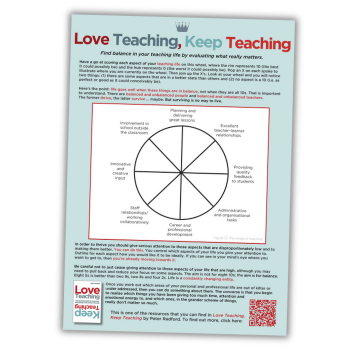Students have teachers figured out in just 2 seconds

Not only can students take as little as two seconds to decide how good a teacher you are, says Sam Pullan – they’re likely to be right about it, too…

- by Sam Pullan

Two seconds. What can you do in two seconds? Not much.
Check the notifications on your phone, perhaps. Take a deep breath, but only in: there’s no time for out, I checked.
If you’re Usain Bolt, run about 20 metres. If you’re a pupil, make a robust judgement about the quality of your teacher.
Wait. What? “If you’re a pupil, make a robust judgement about the quality of your teacher.”
Seriously? Well yes; according to research from two Harvard psychologists, backed up by later studies, two seconds is all it takes for your students to pick up on traits that correlate very strongly with your quality as a teacher.
Not only that: it’s two seconds of non-verbal communication.
That’s right: you don’t even have to say anything and still those perspicacious little b*****s in front of you will have you nailed.
Thin slices
The research was published in 1993 in the Journal of Personality and Social Psychology, under the snappy title of Half a Minute: predicting teacher evaluations from thin slices of non-verbal behavior and physical attractiveness.
The authors, Nalini Ambady and Robert Rosenthal, wanted to look at our ability to form impressions of others based on very short instances of non-verbal behaviour.
They called these short instances “thin slices”. Thin slicing is something we all do, all the time.
Whenever you make a split-second decision, based on experience, you’re thin slicing.
Can you leap onto the train before the doors shut? Can you squeeze into that gap in the traffic? Can you catch that cup before it hits the floor?
In his book Blink: the power of thinking without thinking, Canadian polymath Malcolm Gladwell explains that when we thin slice we are “throwing out all that is irrelevant while we zero in on what really matters.”
Ambady and Rosenthal set out to see whether pupils can do that, zeroing in on what really matters about good teaching.
To do this, they showed a group of university students some thin slices of lecturers in action: three thirty second, non-verbal, clips.
The viewers were then asked to rate the lecturers on fifteen qualities (eg enthusiasm).
Trending
These ratings were then compared to the ratings the lecturers’ actual students had given them after a semester of being in their classes.
The evidence was stark. Six qualities were “significantly predictive” of teacher effectiveness: appearing active, confident, dominant, enthusiastic, likeable and optimistic. The higher teachers scored in those areas, the higher their teacher quality ratings.
(Worryingly, perhaps, honesty was not at all predictive of effectiveness, and professionalism and competence only a bit. So there’s still hope for the slapdash, lying incompetents among us.)
Keep smiling
This seemed remarkable, so they repeated the study, this time with high school teachers.
The results were similar. Three, thirty-second, non-verbal clips was all it took to rank teachers in a way which showed strong correlation between certain traits and teacher effectiveness.
Even more extraordinary, the results were the same, and the correlations similarly robust, even when the thin slices were trimmed to ten, five and even two seconds.
Two seconds. That‘s all it took.
So what does that mean for us as teachers? Helpfully, two traits were significantly predictive across both studies: enthusiasm and likeability.
Even more helpfully, Ambady and Rosenthal looked at some micro-behaviours to see which of those contributed to higher ratings.
Smiling was high on the list, so do it before Christmas, folks. Laughing and nodding your head helps too as, curiously, does keeping your arms symmetrical. (That last one makes more sense if you try it.)
By contrast, try not to frown, gaze down, loom over the students near the front, or fidget.
But remember: it all comes down to two seconds. Inevitably, it will be the first two. So come in likeably and enthusiastically, nodding and smiling, and for goodness’ sake don’t trip over.
Sam Pullan teaches history and politics at Highgate School, where he is also head of Years 7 and 8. Follow him on Twitter at @MrSamPullan










